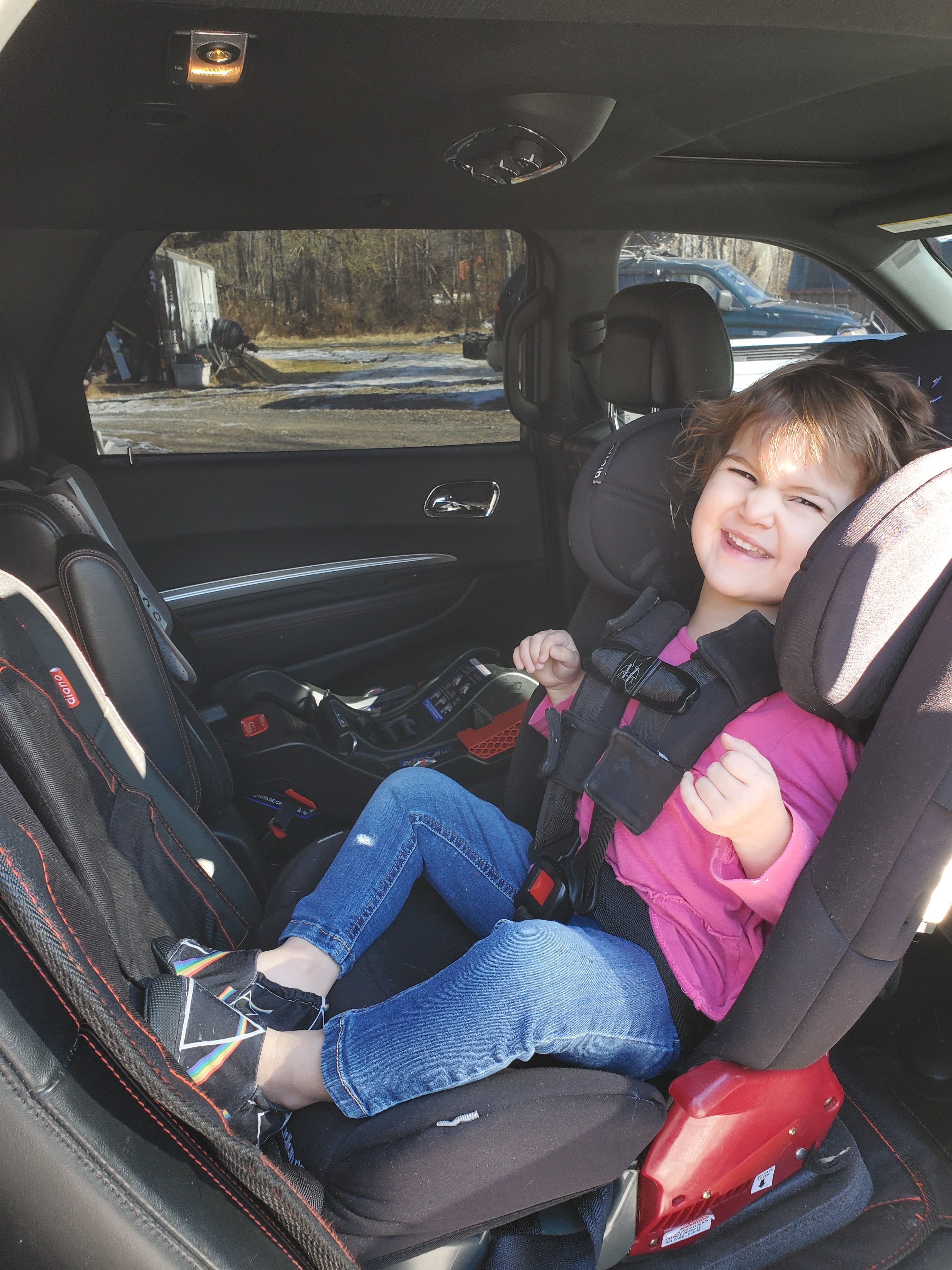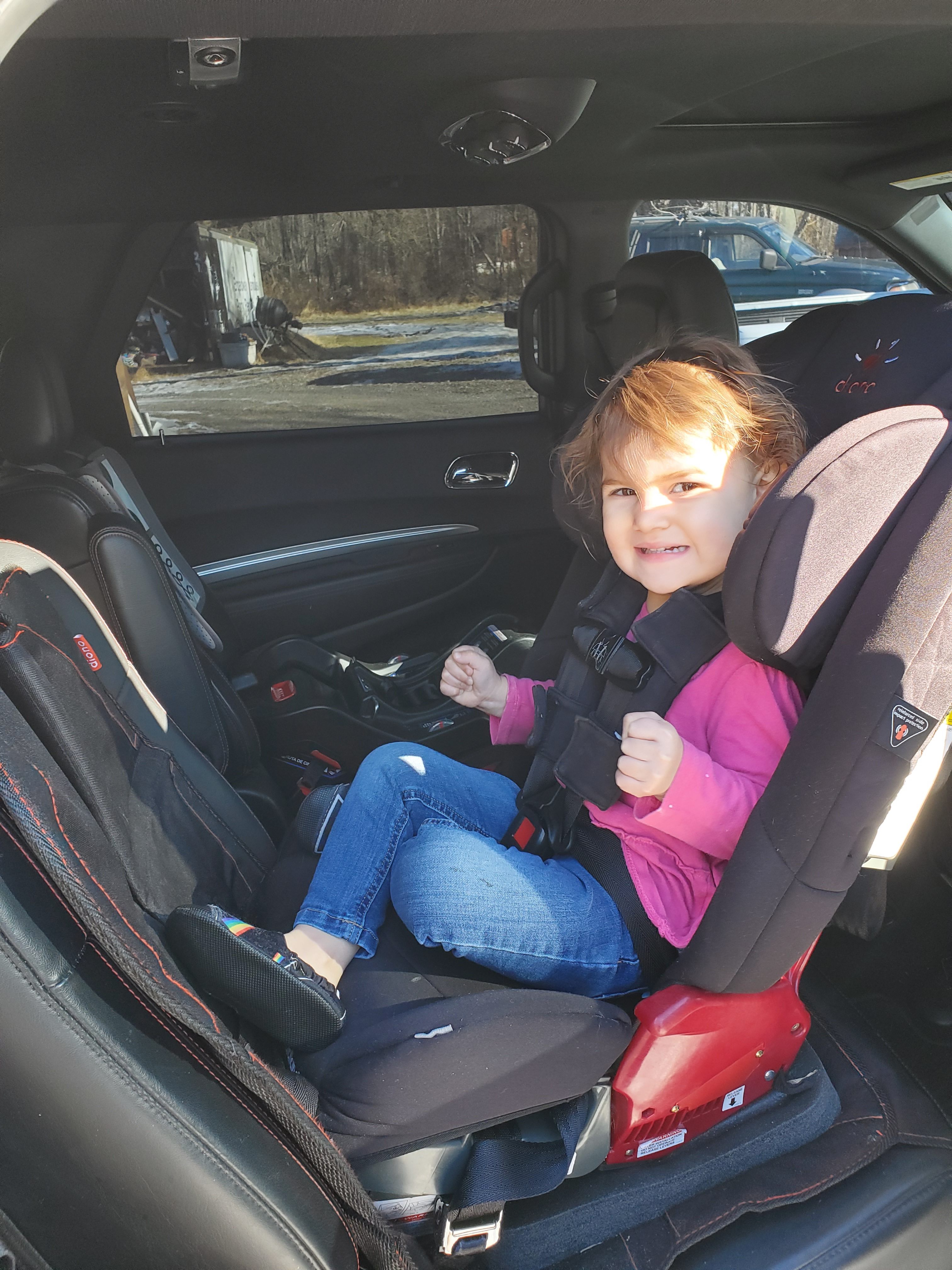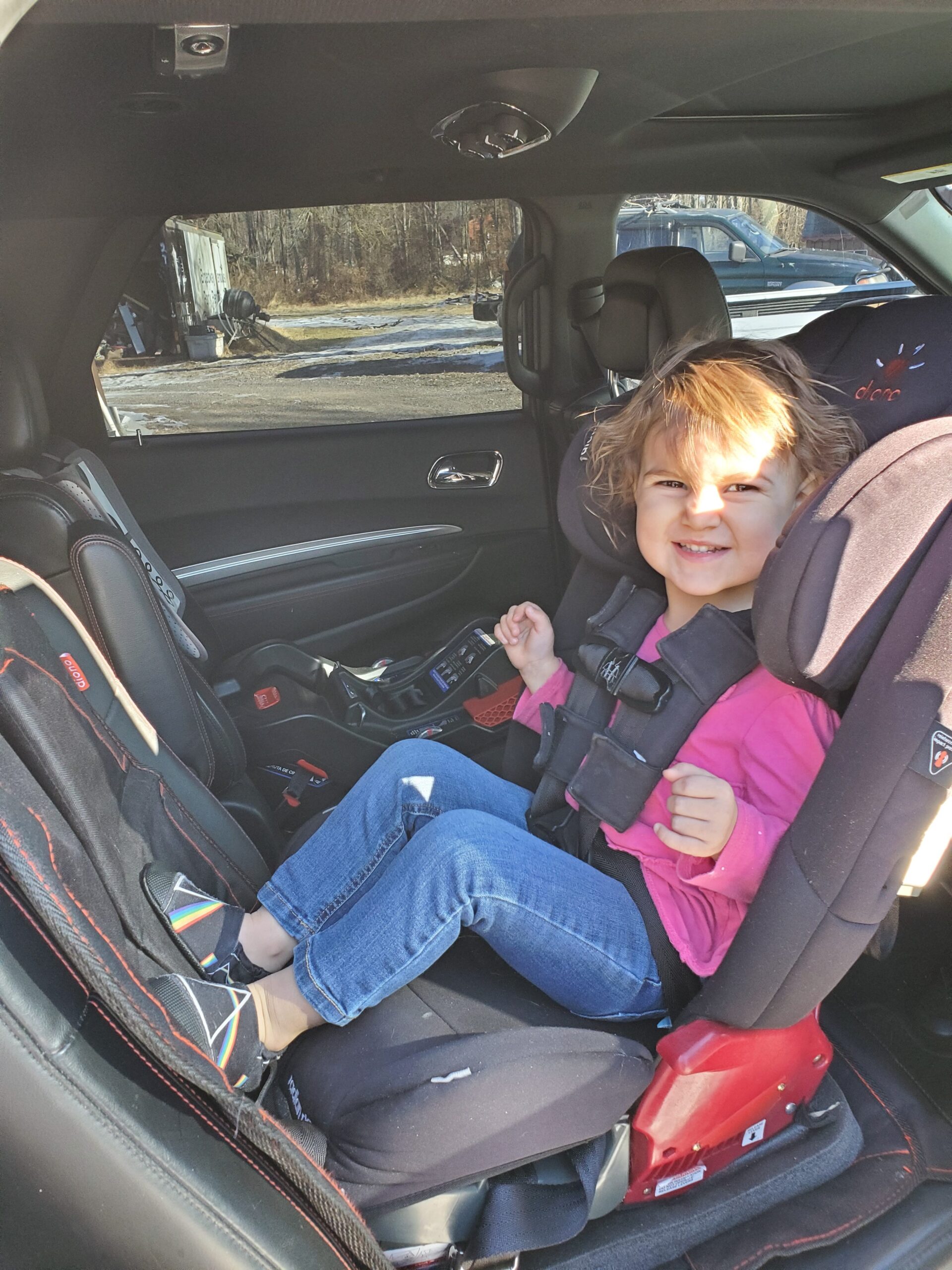Car seat safety is an important topic for new families to brush up on. Did you know it is the law in Pennsylvania for a child to be rear facing minimum of 2 years and further recommendations are that a child should be rear facing for as long as possible given the height and weight requirements from manufacturers? If you are looking for tips on how to keep your little one safe in the car, read on.
Won’t my child be uncomfortable rear facing?
Nope… hear me out. Children’s tendons and cartilage are softer and more flexible than an adult. Have you ever seen a kid sleeping halfway off the bed or bent completely in half and think how are they sleeping like that? It’s because of their flexibility. When they are rear facing they can cross their legs, sit with their legs bent, or even resting on the back of the seat with little to no discomfort.


Why is rear facing better for younger children?
Between birth and one year of age the vertebrae can be seen as three completely separate parts. The back portion of the vertebrae, the Posterior Synchondrosis, become fused between the ages of one and three. Between three and six years the ossification process (fusing of the bones) are complete.
With the bones not fully fused it leaves the spinal column susceptible to damage. When a child is rear facing in an accident the head and spine are cradled by the rear structure of the car seat. However, when the child is forward facing the is no structural support to absorb the impact.
Other car seat safety concerns
If the car seat didn’t come with it, it hasn’t been properly tested by the car seat manufacturer for safety so you should avoid using it with your child.
We know you may wish to protect your baby from the weather. Simply remove the cover prior to clicking your infant carrier into the base or ensure the cover does not interfere with the internal or external protective systems. Something like a shower cap or cape style cover may be a good choice.
Toys and mirrors should be avoided as well. In a collision these objects can become projectiles inside the vehicle. Even during normal use, mirrors and toys can become loose and create a strangulation hazard.
Simply put, non-regulated aftermarket products are a no-go.
Nothing between the carseat and your baby.
Infant shoulder pads are another common product people use. The concern is these are too bulky and cause the car seat to not be tightened properly. If comfort is a concern you can try pulling the child’s shirt up so the straps are not directly on their skin or use the covers provided by your car seat manufacturer.
Winter months call for winter coats and snow suits. However, it is not safe for a child to wear a bulky winter jacket while being in the car seat. This is because a jacket leaves room between the car seat straps and child. In an accident, the jacket would be compressed and you child can easily slip out of the straps which would otherwise be pulled tight enough to hold them securely in place. You can watch this video to see a test crash with a dummy wearing a coat. Instead, opt for a blanket or jacket placed on your child once the car seat straps have been properly secured on your child, or check out a product like this one.
We hope you found this resource helpful in keeping your precious little one safe. Let us know if you have questions.
By: Angelina Miller



